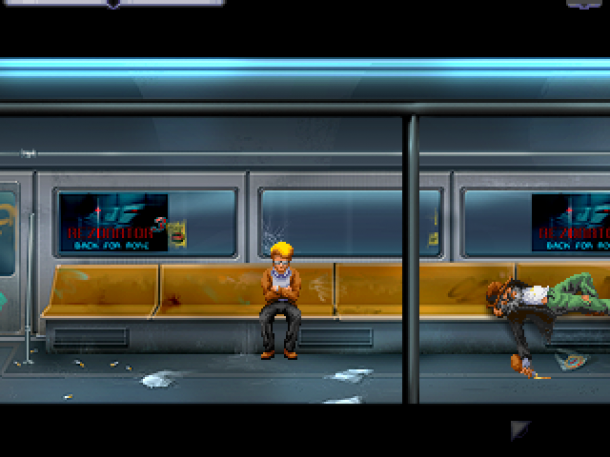 Resonance is as much an homage to the classic adventure game formula as it is an attempt to break with tradition. It asks the questions adventure games are supposed to ask, then adds a layer on top. It’s a character study with a purpose that undoes itself with complexity.
Resonance is as much an homage to the classic adventure game formula as it is an attempt to break with tradition. It asks the questions adventure games are supposed to ask, then adds a layer on top. It’s a character study with a purpose that undoes itself with complexity.
From the outset, developer Wadjet Eye Games sticks to the classic adventure game formula. Comb through the environment, find what seem like pieces of a larger puzzle, and use them to solve a problem. Then it spreads that logic across four playable characters, each with their own strengths and motivations.
In Resonance, the characters are more important than the miscellaneous items left in the environment you’d find in most adventure games. Their interactions and insight drive the problem solving, and ultimately uncover the source of over a dozen mysterious explosions around the world.
 Conversation and character development are vital in Resonance. Each character can store specific pieces of the environment in their short term memory to be brought up during conversation. Important objects return needed context and items, but others dig deeper into the four individuals, sometimes acting like evidence in an interrogation. It removes the item-hunt and replaces it with a smart alternative, however the value of the objects becomes more finite as the game progresses. At a certain point, flavor dialogue becomes fewer and the game gets noticeably linear.
Conversation and character development are vital in Resonance. Each character can store specific pieces of the environment in their short term memory to be brought up during conversation. Important objects return needed context and items, but others dig deeper into the four individuals, sometimes acting like evidence in an interrogation. It removes the item-hunt and replaces it with a smart alternative, however the value of the objects becomes more finite as the game progresses. At a certain point, flavor dialogue becomes fewer and the game gets noticeably linear.
Some of the best moments in Resonance combine adrenaline and ingenuity to create a powerful sense of triumph over certain doom. An early scene tasks you with escaping a room while a hulking creature pounds against the door trying to break through. The thump of each hit pushes you to think quickly. In another section, you’re frantically slicing the rope holding up a ladder as a man rushes to kill you from below. The pacing in these scenes feels natural, and distinctly different than the calm of typical adventure game scenarios.
Where Resonance tries to build on top of the adventure game formula, it stumbles in execution. The bulk of the games puzzles require the use of the characters in tandem. Because certain items can only be used by specific characters, you’ll constantly transfer items and swap between them to find the combination for success. All too often the restraints feel arbitrary, and when you fail to understand the logic, it becomes a chore. The game works hard to define each character’s role, but doesn’t stay consistent in blending that information into its puzzles.

What’s left is a standard adventure game with a simple mystery to unravel. You’ll pull levers, rewire power boxes, and unlock doors. A few emergent mechanics that appear in the intense scenes stand out amongst a pile of fruitless puzzles. While the game offers alternative methods for solving some of the puzzles, they don’t alter the story significantly enough to warrant multiple playthroughs.
Resonance stays faithful to a formula that’s proven inflexible without giving up the genre’s core values. Its grows a strong set of characters in a short period of time, and uses them in surprising ways. Unfortunately, its ambitions fail in execution, rewarding not attention to detail but trial-and-error.
This copy of the game was sent to SideQuesting by the publisher for review purposes.



No Comments